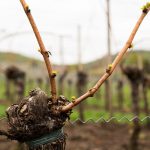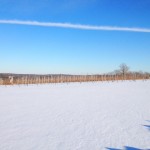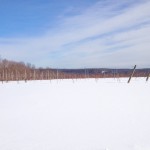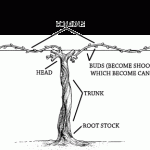The Importance of Pruning Your Home Vineyard
After a holiday respite, when the thermostat plunges downward, comes every grape growers’ favorite task: winter pruning of the vines. This arduous process is integral to the health of the grapevine and its next vintage.
When:
- In late winter to early spring (February-April). In this dormant period, the sap and water runs down from the cordons of the plant into the trunk and roots, allowing the plant to winterize. This cold hardiness will improve over time and the life of the plant. Once the plant has endured the freezing temperatures of the winter, it will be ready to prune.
Why:
- Any grower who has attempted to work with grapes, knows that they are incredibly hardy and vigorous plants. Without aggressive winter pruning, removing approximately 90% of the previous years’ growth, the grapevines will continue to grow vigorously and become and entangled mess upon the trellis. All of the added weight can break the trellis and will generate too much foliage to allow the grapes to receive proper sunlight. The extra foliage can also allow diseases to carry over from the prior growing year, giving them an early head start as soon as temperatures rise.
How:
- There are two main methods of grapevine pruning: cane pruning and spur pruning. In cane pruning, the grower will select the two or four most inner canes closest to the trunk and keep those as renewal canes and remove all of the other growth. On some hybrid or native plants, you could be removing some canes that run 15 feet long! You can’t kill a grapevine, so no need to worry about the large amount of plant material you are removing. It should be about 80-90% of the growth from the former year.
Spur pruning is another style of winter pruning in which the grower will remove the most of the cane growth from the previous year, leaving the main cordons and a 1-2 bud spur behind. The spurs contain 1-2 buds that will produce the following years fruiting canes. As the vine ages, it is important to monitor the cordons for disease and ensure that you are keeping healthy material. The grower can always change over from one method of pruning to another, depending on their grapevines’ individual needs.
An interesting experiment would be to prune two grapevines of the same variety using each different method, and see the results in that years’ harvest!
Interested in making your own wine? Musto Wine Grape Company is here to help! We are New England’s largest supplier for home winemaking products and services. We can get you set up with all of your juice, grape and equipment needs and have you on track to making your own perfect pairing for next fall! Visit juicegrape.com or give us a call at (877) 812 – 1137 to learn more. We look forward to hearing from you!
Winter at Cassidy Hill Vineyards
Winter time in the vineyard is very important. What happens at the beginning of the year sets the tone for the vintage to come. Cassidy Hill Vineyards in Coventry, CT was kind enough to send us some photos of what is going on in their vineyard this winter. As you can see there is a lot of snow but once the snow melts they will get back to pruning. It looks like it’s their vineyard dog’s favorite activity, don’t you think? 🙂 Notice the close up pictures of the vines. There is an example of a non-pruned vine and what the vine looks like after they went through and pruned.
Pruning can be a very tedious task. The grapes are only harvested off of 2nd year wood. Therefore, off of each spur you prune down to one cane. Off of each cane you prune down to two buds and each bud will grow into a new cane. Each cane will then have 2 clusters. It sounds simple enough but many vineyard managers will tell you it can be difficult and time consuming. The next time you drive by your local vineyard take a look at what stage of life the grapes are in. Are they dormant? Have the vines been pruned? Do you see bud break? Just because it isn’t harvest, doesn’t mean there isn’t work to be done in the vineyard.













Recent Comments